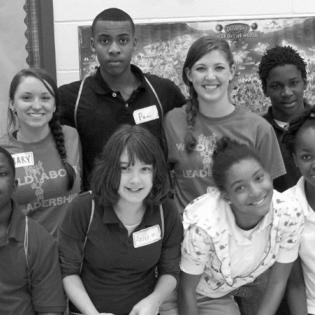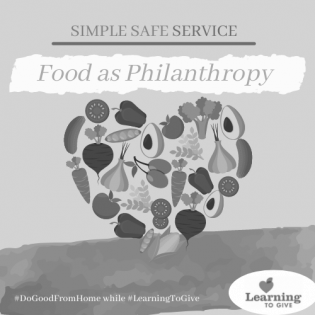This resource was developed in collaboration with the Council of Michigan Foundations (CMF) Youth Philanthropy Task Force powered by Michigan youth, CMF members, and nonprofit leaders.
Filter by subjects:
Filter by grades:
Filter by audience:
Filter by issue area:
Filter by content type:
Filter by resource type:
resource search
This resource was developed in collaboration with the Council of Michigan Foundations (CMF) Youth Philanthropy Task Force powered by Michigan youth, CMF members, and nonprofit leaders.
Michelle Parker
Definitions
What are the benefits of engaging youth in philanthropy? Young people may bring new ways of thinking to community-centered work, curiosity, and openness to differences. They may also gain skills and knowledge of philanthropy and learn about career opportunities. This document shares benefits to your organization, community, and youth themselves.
A Simple Safe Service project from home: Give food as a gift to express care and love or donate food to community members and local nonprofits. Food has always been a gift we give from our hearts. When we visit family, friends, or community members, we often bring gifts of food, which is an expression of our time and talent - a one-of-a-kind gift. Whether we bring cookies to an elderly neighbor or donate canned goods to a shelter, food is a fundamental need and the first thing we think of in a crisis.
One of our roles in a civil society is connecting to diverse others and seeing their light within. In this lesson, learners watch a video and listen to an audio recording that both show how we can overcome first impressions about people and value the diversity of their experiences and culture....
Learners compare and contrast the work and mission of four famous philanthropists: Cesar Chavez, George Washington Carver, Sunderlal Buhuguna, and Abdul Sattar Edhi. They identify the motivations, impact, and attitudes about service, and start to clarify their personal attitudes about service by...
Using the radio broadcast "This I Believe" as a model, learners create visual or audio statements of their beliefs about volunteering and serving. Each presentation communicates the culture, experiences, and motivations that influence the learner's attitude about service. After presenting...
The "Current Event Check-In" is an Everyday SEL practice. It is a culturally responsive version of the daily emotion check-in; it offers youth the opportunity to check-in regarding the current events in their communities. In order to have a social awareness of one’s community, youth must be able to inquire, discuss, and share their thoughts and opinions about the events in their community on a regular basis.



